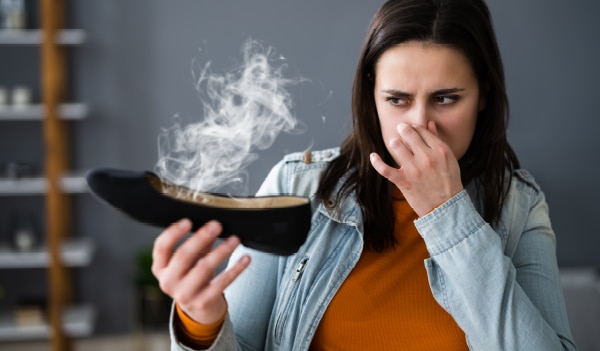Comprehensive Guide to Sweaty Hands Treatment: Proven Dermatology Approaches
Comprehensive Guide to Sweaty Hands Treatment: Proven Dermatology Approaches
Blog Article
Understanding the Source of Excessive Sweating and Its Effect On Day-to-day Live
Excessive sweating, likewise referred to as hyperhidrosis, is a problem that affects a considerable part of the population, yet its hidden reasons and effects on daily functioning stay rather enigmatic. While it is generally understood as a physiological reaction to regulate body temperature, the triggers for extreme sweating can vary commonly among people, including not just physical variables yet emotional and additionally psychological components. The impact of this condition extends beyond plain pain, often affecting social communications and total top quality of life. By diving right into the origin of hyperhidrosis and discovering its complex impacts, a deeper understanding of this pervasive concern can be obtained, dropping light on the complexities that individuals grappling with excessive sweating browse every day.
Physiology of Sweat Glands
The law of sweat production, an important physiological procedure, is primarily controlled by the activity of sweat glands dispersed across the body. Sweat glands are classified into 2 main kinds: eccrine and apocrine glands. Eccrine glands are the most many and are found in mostly all areas of the body. They play an essential role in thermoregulation by producing a watery fluid onto the skin's surface, which vaporizes and helps cool down the body down. In contrast, apocrine glands are focused in areas abundant in hair follicles, such as the armpits and groin, and their secretions are thicker and milklike in look.
When the body temperature climbs, either due to exercise, heats, or emotional tension, the nerve system triggers the sweat glands to create sweat. This sweat is made up mostly of water and electrolytes like salt and chloride. The process of sweat production is necessary for keeping the body's inner temperature within a narrow, ideal variety, highlighting the essential function sweat glands play in human physiology.
Triggers for Excessive Sweating
In understanding the source of extreme sweating, it is important to determine the triggers that can lead to this physiological feedback. Extreme sweating, additionally recognized as hyperhidrosis, can be motivated by numerous variables, both ecological and physical. One usual trigger is psychological anxiety or anxiousness, which can boost the body's gland to create more sweat than is required for cooling. Physical exertion, high temperatures, and spicy foods are also known to cause extreme sweating in individuals prone to this condition. Moreover, particular clinical problems like diabetes mellitus, hyperthyroidism, or menopause can add to excessive sweating as well.
Additionally, drugs such as some antidepressants, opioids, and specific supplements can additionally function as triggers for hyperhidrosis. Understanding these triggers is crucial in managing extreme sweating effectively - Exessive Sweating. By recognizing and dealing with the details triggers that prompt too much sweating in an individual, health care companies can develop tailored therapy plans to ease this condition and enhance the person's quality of life
Medical Conditions Associated
Related to excessive sweating are different clinical problems that can intensify this physical feedback. One common condition is hyperhidrosis, a condition identified by abnormally enhanced sweating that goes beyond the body's thermoregulatory demands. This can manifest in focal areas like the palms, soles, underarms, or face, affecting a person's lifestyle due to social embarrassment and discomfort.
In addition, endocrine problems such as hyperthyroidism, diabetes mellitus, and menopausal hot flashes can additionally cause extreme sweating. Hyperthyroidism triggers an overproduction of thyroid hormones, accelerating metabolism and triggering sweating. Diabetes can induce sweating episodes, specifically throughout hypoglycemic episodes when blood glucose levels drop too reduced. Menopausal warm flashes, associated to hormonal fluctuations throughout menopause, can trigger extreme and sudden sweating, frequently accompanied by flushing and heart palpitations.
Additionally, infections like endocarditis, hiv, and consumption have been linked with night sweats, a typical signs and symptom known to interfere with rest and affect total wellness. These clinical conditions highlight the diverse series of underlying elements that can add to excessive sweating, demanding complete assessment and monitoring by healthcare professionals.
Emotional and emotional Variables

Impact on Social Communications
Excessive sweating can have profound results on an individual's capability to involve conveniently in social communications. The noticeable indications of sweat discolorations or wet patches on apparel can result in shame and self-consciousness, causing individuals to take out from social scenarios. This withdrawal can impact connections, restriction social activities, and hinder individual and specialist development.

Moreover, the stress and anxiety and self-confidence concerns coming from excessive sweating can affect communication and interpersonal abilities. People may have a hard time to focus on discussions, participate in group tasks, or express themselves confidently. This can result in feelings of isolation and loneliness, as social connections end up being challenging to maintain.
Conclusion

While it is generally comprehended as a physiological action to regulate body temperature level, the triggers for excessive sweating can differ commonly amongst people, encompassing not only physical elements but also psychological and mental elements. By diving right into the origin creates of hyperhidrosis and exploring its complex effects, a deeper understanding of this pervasive problem can be acquired, losing light on the complexities that people grappling with too much sweating browse on an everyday basis.
Physical physical effort, high temperature levels, and spicy foods are additionally known to cause too much sweating in people vulnerable to this condition. By recognizing and attending to the details triggers that trigger extreme sweating in an individual, medical care service providers can establish individualized therapy strategies to ease this condition and improve the individual's quality of life.
Too much sweating can have extensive impacts on an individual's ability to involve pleasantly in social interactions.
Report this page